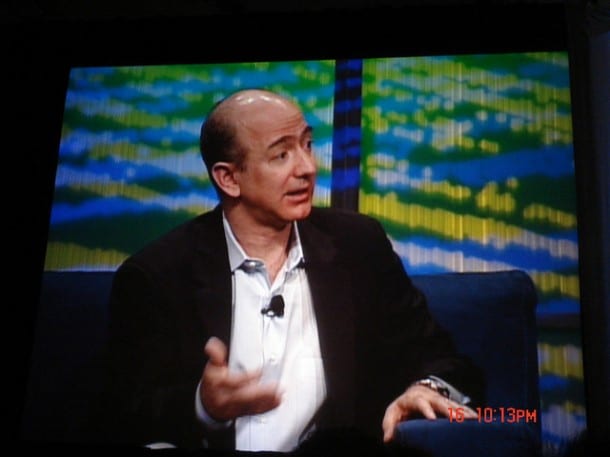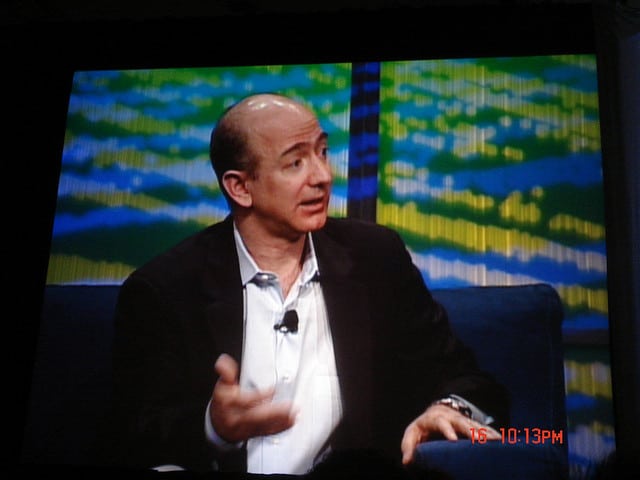
When it comes to business books, Amazon CEO Jeff Bezos’ taste can be described as a mix of 90’s hits and contemporary adult.
CNBC reporter Jon Fortt recently had the good fortune of interviewing Bezos. Of all the things they discussed, including the new Kindle Fire tablets, what was Fortt’s “favorite detail”?
According to his LinkedIn post it was when Bezos revealed the three business books that top executives at Amazon must read.
Management had everyone so focused on ISO certification and process, we had forgotten about products, the customer, and… profits.
They are:
— The Effective Executive (1993) by Peter Drucker
— The Innovator’s Solution (2003) by Clayton Christensen
— The Goal (1992) by Eliyahu Goldratt
Fortt says Jeff Bezos spent the summer at Lab126, a retreat in Silicon Valley where the engineering team could “hash out hardware designs” while Bezos hosted book club discussions with his top executives.
“Bezos said he used the books as frameworks for sketching out the future of the company,” he added.
Drucker is widely considered, along with Michael Porter (Competitive Advantage) and Geoffrey Moore (Crossing the Chasm), as one of the most influential business thinkers of our time. In his classic The Effective Executive he lays out five principles for essential business effectiveness:
- Managing time
- Choosing what to contribute to the organization
- Knowing where and how to mobilize strength for best effect
- Setting the right priorities
- Knitting all of them together with effective decision-making
Easy to read, the book has been heralded for taking simple ideas and concepts and exploring the correlations between human behavior and actions and their impact on corporate (and government) environments.
The Innovator’s Solution is Clayton Christen’s follow-up and response to his top selling The Innovator’s Dilemma. While the latter documented the pitfalls of prioritizing profits above all else, this one, as expected, details the solution–going so far as to advocate and detail the role of the disruptor, the key to long-term survival. Like Thomas J. Peters and Jr. Robert. H. Waterman’s seminal In Search of Excellence (1984), a book famously known for establishing the “customer case study” framework used by many authors and businesses today, Christen documents scores of real-life examples to drive home his points. If you’re a student of innovation, it’s a must-read. One of my all-time favorites.
ALSO SEE: John McAfee Returns to Silicon Valley (Interview)
The last in the Bezos trilogy is The Goal: A Process of Ongoing Improvement, a book I have yet to read; but will be sure too soon now it has the wizard’s stamp of approval. Interestingly, this one is centered around the manufacturing process, so far as I can tell from its jacket. At its core is the “Theory of Constraints” – key elements an organization needs to become a master of ongoing process improvement. Reading about this book I was reminded of the “ISO” quality certification of the 1990’s. Remember that? Document everything. Create processes. At the once high flying, tech bluechip Nortel Telecomm in Ottawa, Canada, we had painstakingly become ISO 9001 experts, through and through. One problem though. Management had everyone so focused on process, we had forgotten about products, the customer, and… profits.


